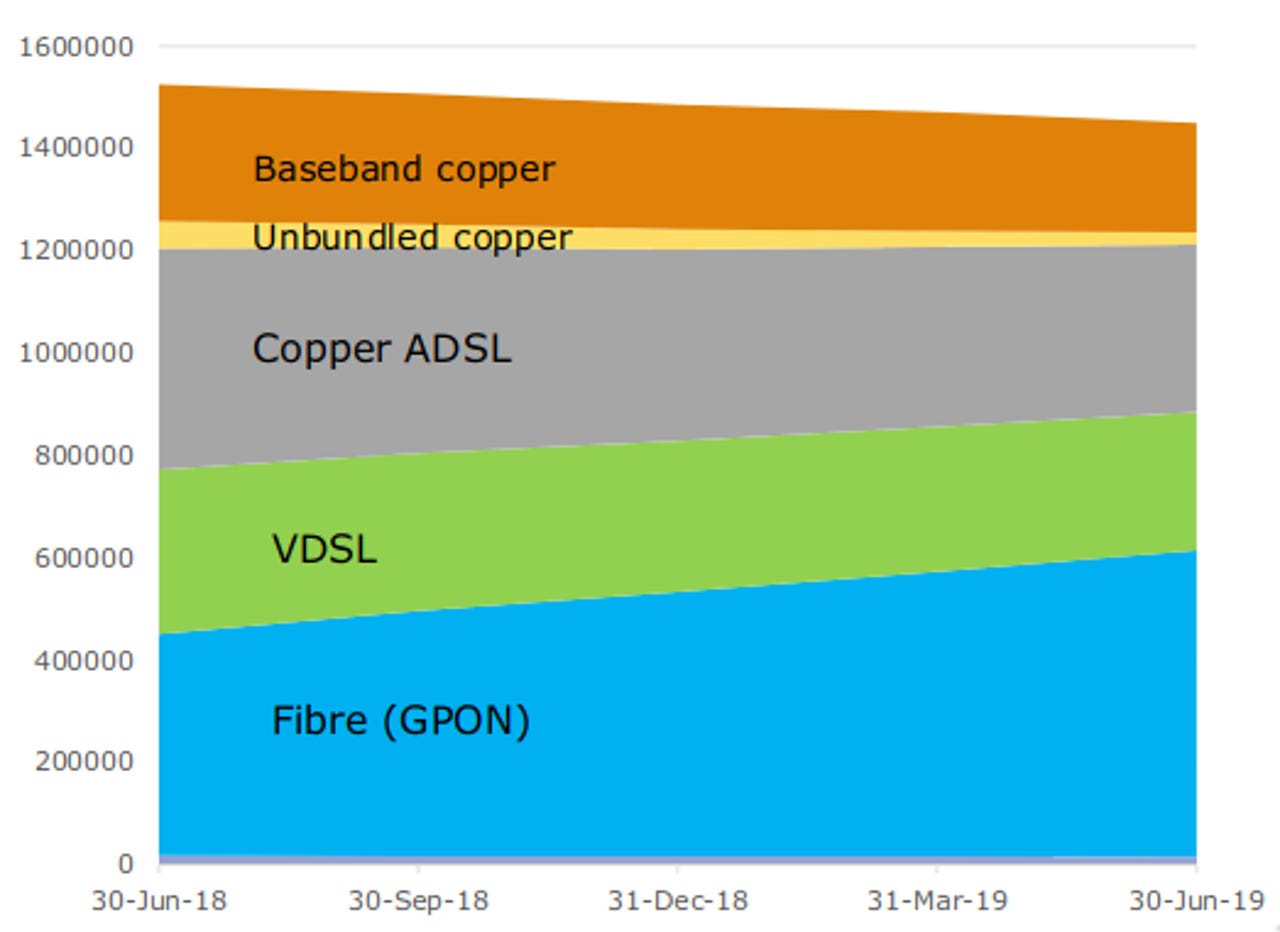Chorus has over 50% of NZ broadband on fibre


New Zealand telco wholesaler Chorus has disclosed that of its almost 1.2 million broadband connections, 600,000 use fibre GPON connections.
The remaining half of the Shaky Isles is split between 270,000 VDSL connections and 327,000 ADSL connections.
Chorus said in an update to the ASX that as of June 30, it had 58,000 customers on 1Gbps connections, which it wholesales for NZ$60 per month.
A recent New Zealand Commerce Commission report found 1Gbps Fibre Max speeds in the country delivered 550Mbps in off-peak times, and 525Mbps in peak times.
For these plans, the numbers translate to 62% off-peak and 58% peak advertised speeds.
"A major contributor to the relative underperformance of the Fibre Max services during peak hours is the interconnection issue," the report said.
"Excluding the results of the one RSP with the interconnection issue, would only see Fibre Max reach 72.3% peak hours."
Broken out by market share for fibre users on Wednesday, Chorus said 1Gbps plans had 10% of the market, while 71% sat on NZ$46 wholesale 100Mbps plans. The company also had around 10% on NZ$42.50 per month 50Mbps plans, and a sliver of its users were on 200Mbps plans that wholesale for NZ$55 per month.
The company added its peak data usage on its network had now exceeded over 2Tbps, an increase of 77% on the levels posted two years ago, and is currently undertaking 10GPON trials with retailers which could see speeds top out at 10Gbps.
In February, Chorus said the trial would be across residential and small and medium-sized businesses with fibre connections in Auckland and Wellington, and make use of Nokia's XGS-PON fibre technology.
Overall, New Zealand Ultra-Fast Broadband network is now 80% complete, with average uptake sitting at 53% of premises.
The UFB is planned to provide fibre-to-the-premise to 87% of the nation by 2022, representing 1.8 million premises.
Across the ditch, Australia's National Broadband Network is aiming to connect 12 million premises by 2022, of which only a tad over 2 million are set to be fibre-to-the-premise.
Almost half of the remaining 10 million will be connected with either fibre-to-the-node or fibre-to-the-basement, 2.5 million will be on hybrid fibre-coaxial (HFC), 1.4 million should have fibre-to-the-curb, 600,000 will be on fixed wireless, and 400,000 will use NBN's satellites for connectivity.
On Wednesday morning, NBN announced it had conducted a DOCSIS 3.1 test on a customer's HFC line at Templestowe, Victoria that clocked in at 994Mbps.
"This is an important day for NBN. It shows how a specific technology -- HFC -- is evolving to meet customer demand for greater capacity from their broadband connection over time," NBN chief technology officer Ray Owen said.
"As we work to complete our network rollout, we're constantly looking at what's over the horizon for all of our technology assets and how we can evolve our network as demand grows."
Related Coverage
- Chorus and partners underestimated migrant worker risk in UFB rollout
- New Zealand Fibre Max connections average over 520Mbps
- Chorus trials 10Gbps broadband
- Vocus and Vodafone NZ announce UFB fibre unbundling joint venture
- Chorus reduces gigabit fibre wholesale price to 60 bucks
- New Zealand ComCom lays charges against Vocus subsidaries